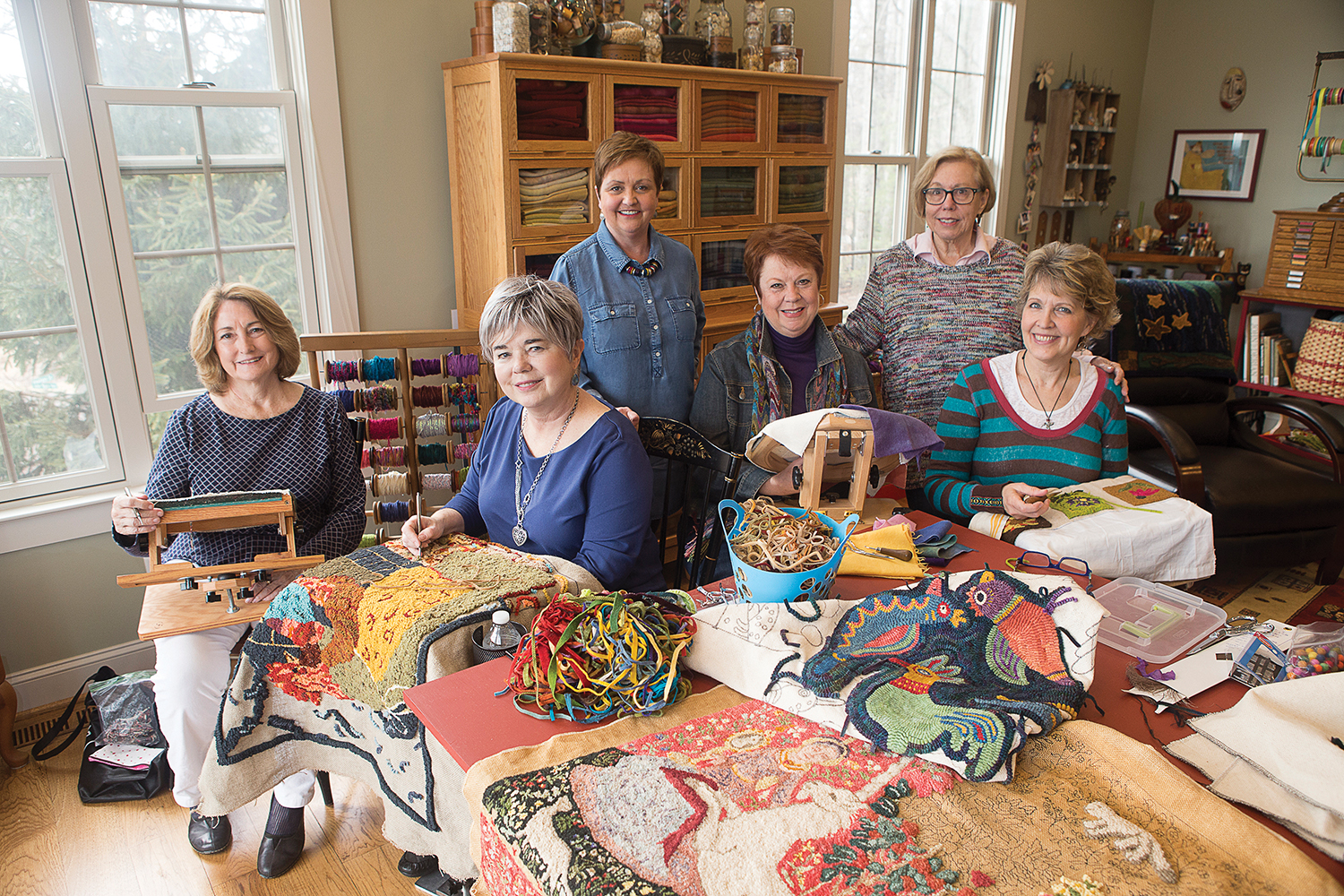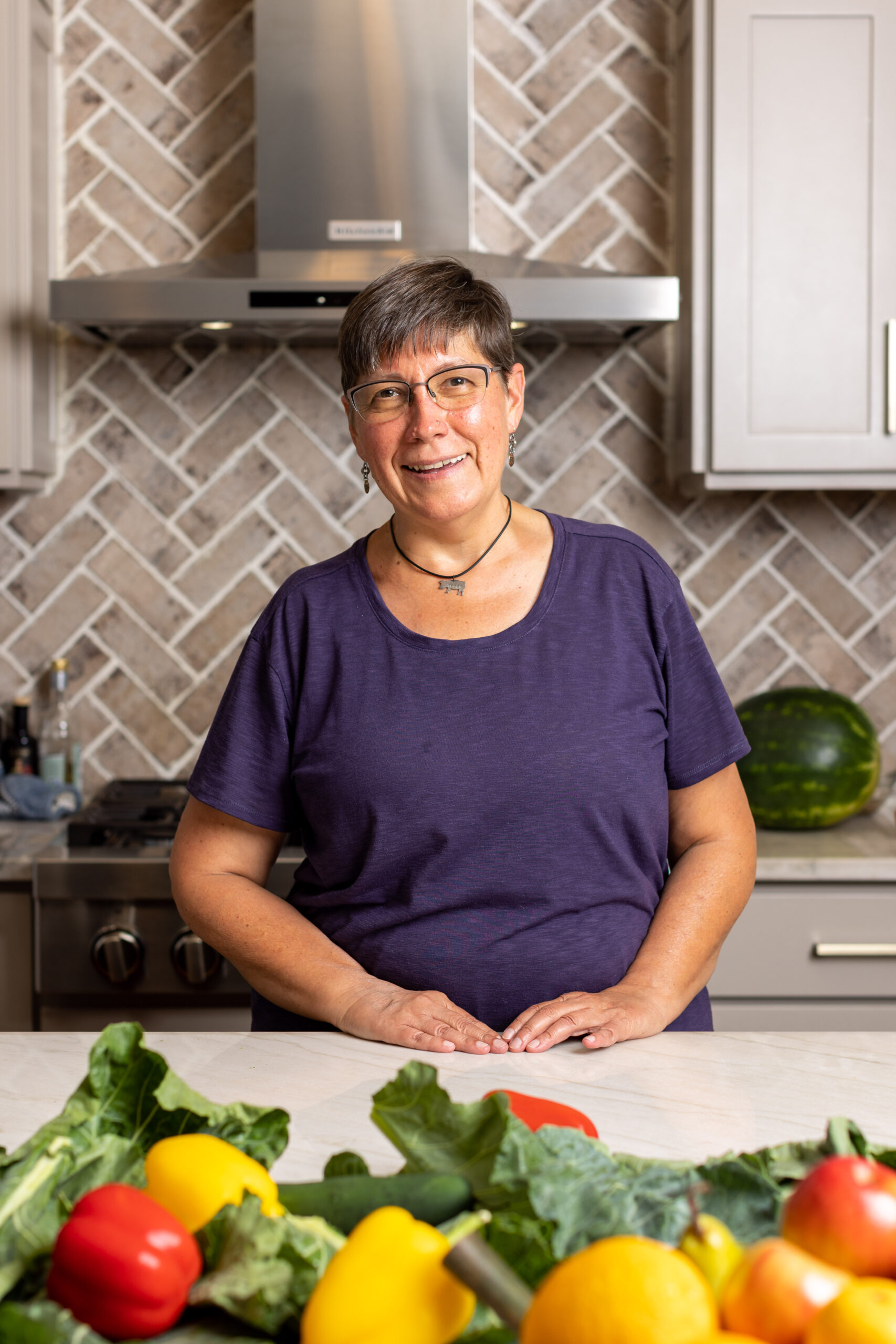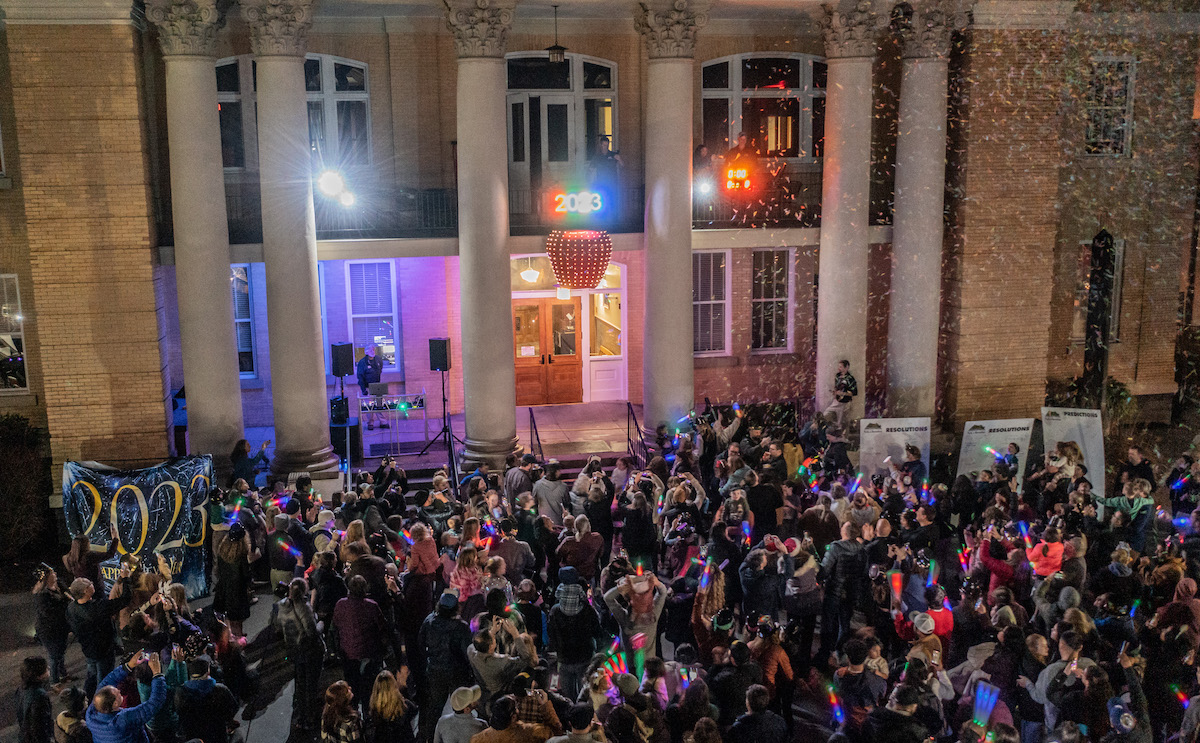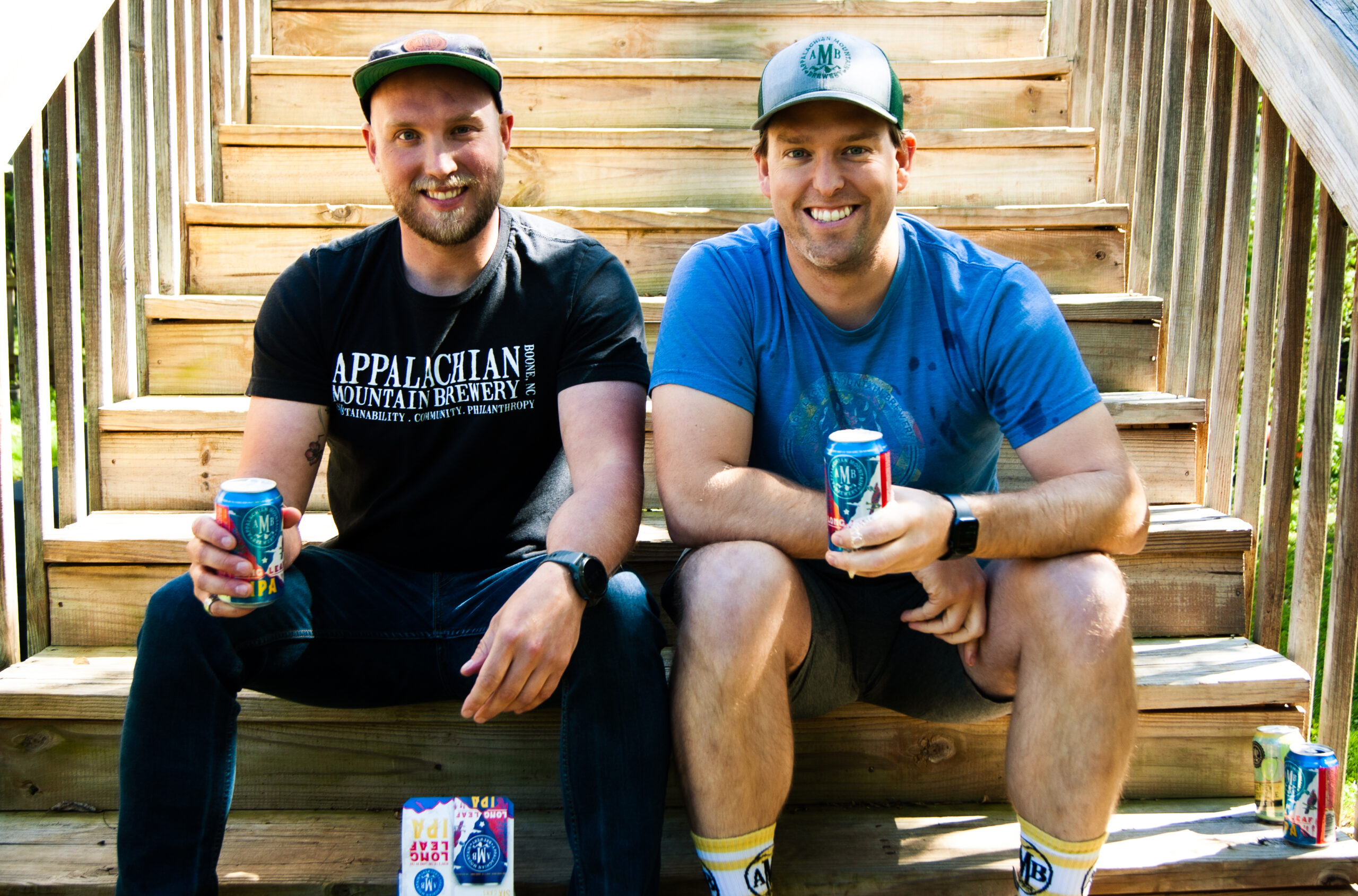
Beautiful tapestries and abstract inventions: this is an art that never runs out of possibilities. L to R: Tarheel Ruggers members Connie Brown, Debbie Harmon, Jan Kwiatkowski, Mary Beth Jung, Libby Miller and Leslie Schreiber.
Photo by Matt Rose
One of America’s oldest crafts is having a new moment in this month’s “Hooking in the Mountains” exhibit at the Transylvania Arts Council in Brevard. It’s organized by Hendersonville’s Tarheel Ruggers, whose more than 30 members practice the time-honored art of rug hooking. Using variously colored strips of wool and other materials, practitioners wield a crochet-style hook to pull each wool strip through a linen or cotton backing to form loops. It’s a process enthusiasts describe as “painting with wool.” More than 80 examples will be included in the TCAC show, most of them for sale.
“Rug hooking today can have a more traditional look, but you will see some more creative and even abstract rugs,” says Tarheel Ruggers member Mary Beth Jung, who took up the craft some years ago when she was homebound with a knee injury. “It’s a wonderful art form,” she adds, that “knows no limits” in design, size, or form. In addition to wool, hookers (and that is how they describe themselves) can expand their materials repertoire with ribbons, silks, leather, or other nontraditional materials. Even old watches and gears from vintage machinery sometimes find their way into the work.
Rug hooking was developed in North America — in New England, in the Canadian Maritimes, and in Newfoundland and Labrador. In the 1830s, it was a craft of poverty, a way for families to have rugs on the floor when machine-made rugs were affordable only for the rich. Poor women began using their woven fabric scraps to create homemade floor coverings, which had become the fashion. Burlap grain bags were used as rug foundations because they were free.
But contemporary rug hooking long ago shed its image of a homemaking craft restricted to women and girls. “Some of the movers and shakers in this craft are men, so the stereotype has certainly changed over the years,” Jung points out. While many Tarheel Ruggers members are retired, newer practitioners are younger working professionals; the group includes a real-estate agent, a medical technologist, and a freelance writer. “It’s not difficult to hook a rug,” she adds. “Like any craft, it takes the right tools and some practice. With our guild, new hookers have all the guidance they’ll need to get them started and begin to find their own style.”
One aspect of traditional hooking that remains, though, is the social interaction it encourages and the satisfaction of turning everyday materials into something of beauty. Among the supplies her mother provided during Jung’s knee injury were parts of long outgrown, hand-sewn clothes. Jung used them to hook one of her first rugs, which she still treasures. “When I glance at that rug, I can see a skirt and a tweed jacket buried in the design,” she says. “More memories.”

Fish by Mary Beth Jung.
Photo by Matt Rose
The Transylvania Community Arts Council (349 South Caldwell St., Brevard, tcarts.org) hosts “Hooking in the Mountains: Traditional to Contemporary,” an exhibit and sale of hooked rugs produced by members of the Tarheel Ruggers, March 8-29. The venue is open weekdays from 9:30-5pm with special hours Saturdays (March 9 and 16) from 10am-2pm. An opening reception will be held on Friday, March 8, 5-7pm. The Tarheel Ruggers meet on the 2nd and 4th Mondays of each month from 10am-2pm at the Cummings United Methodist Church in Mills River. To learn more, visit wncrughooking.com.



